Devin: Jonathan, what is your superpower?
Jon: I guess I don’t know that I have any superpowers aside from just getting in there and doing it. I guess I’ve never been one that shied away from a challenge. I think we’re were put here for a reason. And I believe that you’re in your position, and I’m in my position in order to do something. Ok? And to me, that’s not a superpower that’s just doing your job.
Making the Switch From Scientist to Farmer
Jonathan Lundgren was receiving an award from President Barack Obama when he decided he needed to leave his comfortable government research position to effect real change. He quit to become a farmer.
“I just decided, if we’re going to use science to help fuel this movement, we’ve got to rethink how science is done,” Jonathan says.
As an entomologist, he studied insects. He worked for the USDA Ag Research Service when he chose to make the switch so that he could speak with the voice of authority that comes only from walking your talk.
“If you’re trying to give advice on how to run a person’s farm, you’d better have walked a mile in their shoes,” Jonathan says.
To fund the purchase and support the operation of the farm in its struggling startup phase, Jonathan led a crowdfunding campaign. He was able to gather donations from around the world.
Today, Jonathan leads Blue Dasher Farm and its nonprofit research arm, Ecdysis Foundation. The farm comprises 53 acres of land in South Dakota, near the Minnesota border. “Half of that is unbroken, prairie and wetlands,” he says.
“The number one product of our farm is a balance of life,” Jonathan says before listing the products that generate its revenue. “In terms of products besides homeostasis, we produce honey; we produce lamb; we produce eggs for our local community; we produce poultry, turkeys; we have seeds that we produce like grassland seeds.”
Regenerative Agriculture
“What regenerative AG kind of promises is to reverse a lot of these planetary-scale problems that we’re facing right now as a society,” Jonathan says.
He identifies four outputs of a regenerative farm:
Soil health
Biodiversity
Nutritious food
Profits
The follow-one effects of these fundamental outputs include:
Soil carbon sequestration
Reversing desertification
Balancing water relationships
Conserving threatened and endangered species
Enhancing rural communities
Improving public health
California’s Central Valley used to be a wetland, Jonathan says. Industrial agriculture is desertifying one of the nation’s most productive farm regions, threatening its ability to produce.
Jonathan highlights a foundational principle for understanding how and why regenerative agriculture works. “The energy that comes into that system comes from the Sun. The only way you catch that is with plants’ photosynthesis. So step one in trying to reverse desertification and reset water balances is to get plants out there.”
Almonds require lots of water. Jonathan shares an example of how regenerative agriculture practices reduce water requirements.
I walked onto this one regenerative almond orchard and he had used some of his water to put in what's called a cover crop. All of this is just a bunch of flowering plant species that live out there. You don't harvest it for anything. You can graze it, maybe. But all walking into this orchard, normally you get out of the car and you're just like, Oh my gosh, I'm about to bake. And you could feel with every one of your senses that this was something different; using this approach to agriculture not only increases the bottom line of the farmer but can reverse climate change.
The fact is, industrial agricultural practices consume vast amounts of fossil fuels and are depleting precious topsoil.
“You can think of agriculture as the problem. Or you can think of it as the solution,” Jonathan says. “I prefer to think of our food system as the solution. That means that we do have to change the way that we produce food.”
Some argue that animal agriculture is a fundamental part of the problem. Regenerative agriculture shows otherwise, Jonathan says.
We're not going to be able to fight climate change without animals. Bottom line, we need these animals because of the many things that they do. Number one is they strengthen the resilience of a farming operation. It allows an additional revenue stream to come off of that piece of ground. Number two, these animals are a really critical tool for managing plant communities, and the only way to maximize carbon sequestration is by having animals on the land. The animals work with the plants to inspire plant diversification, as well as plant biomass production. You've got to have animals in there in order to maximize the productivity of a system.
Jonathan has no cattle or cows on his farm. He says, “You need a diversity of animals out there to maximize the productivity of a system. And animals work together really well. And so a monoculture of cows is just as bad as a monoculture of anything else.”
The Largest Agricultural Experiment Ever Attempted
The Ecdysis Foundation recently launched the 1000 Farms Initiative, an effort to recruit 1,000 farmers around the world to adopt regenerative agricultural practices and subject them to scientific scrutiny. The goal is to see how to adapt the methods to the broadest range of possible climates and circumstances to accelerate a practical transition to their wider adoption.
“This is the largest agricultural experiment that’s ever been attempted, and it’s the kind of bold experiment or science that is desperately needed,” Jonathan says.
In all of his work, Jonathan sees his ability to get things done as his superpower—though he is reluctant to call it that.
How to Develop the Ability to Get Things Done As a Superpower
Doing what you feel is your mission or purpose in life is a superpower. Countless people wander where opportunity takes them or circumstances force them. Jonathan has made choices and taken actions consistent with them to make consequential things happen.
Reflecting on a short term failure where early in his career he told farmers how to do their work as part of an experiment and didn’t get the results he needed, he said, “I asserted myself, and when I did that, I lost what was special about those farms.”
“The next year, I said, ‘You know what? You guys are the experts. Show me the corn phase of your rotation.’ And they did, and then they showed me the conventional neighbor,” Jonathan says of the lesson learned. “And that study ended up revolutionizing all of the research that we’ve done ever since.”
“I think sometimes a superpower is having confidence but also knowing when to be humble and listen,” Jonathan says of the experience. The willingness to listen and learn may be a more powerful strength than assertive confidence.
Jonathan concluded with three principles to help you build your ability to get things done:
Always have your eyes on the mission.
Cultivate multiple options to skin that cat.
Be ready to abandon the options that aren’t successful in order to focus on those things that are getting you where you have to be as quickly and efficiently as possible.
If you use those three principles as Jonathan has, you too can make your ability to get things done a superpower that will enable you to do more good.

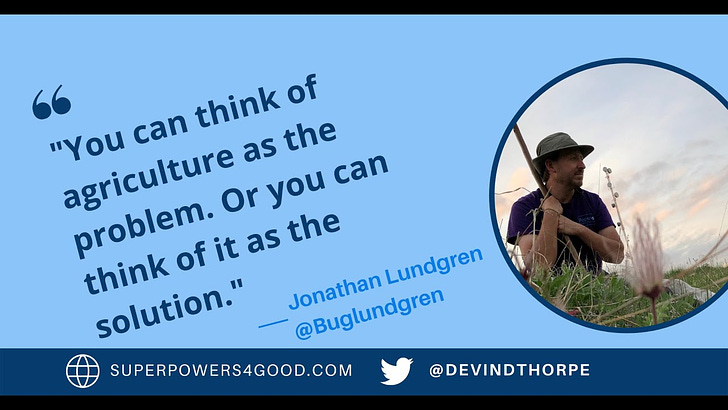


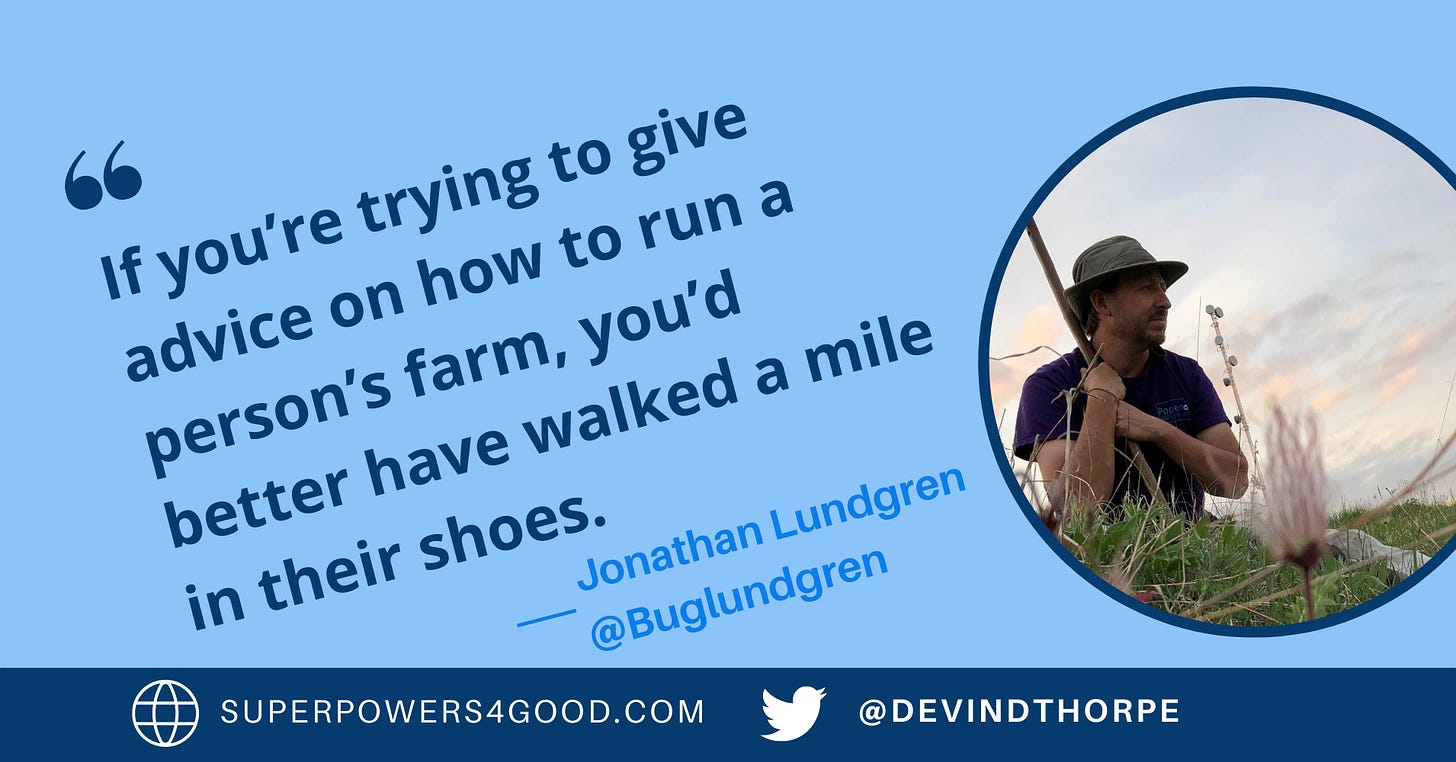
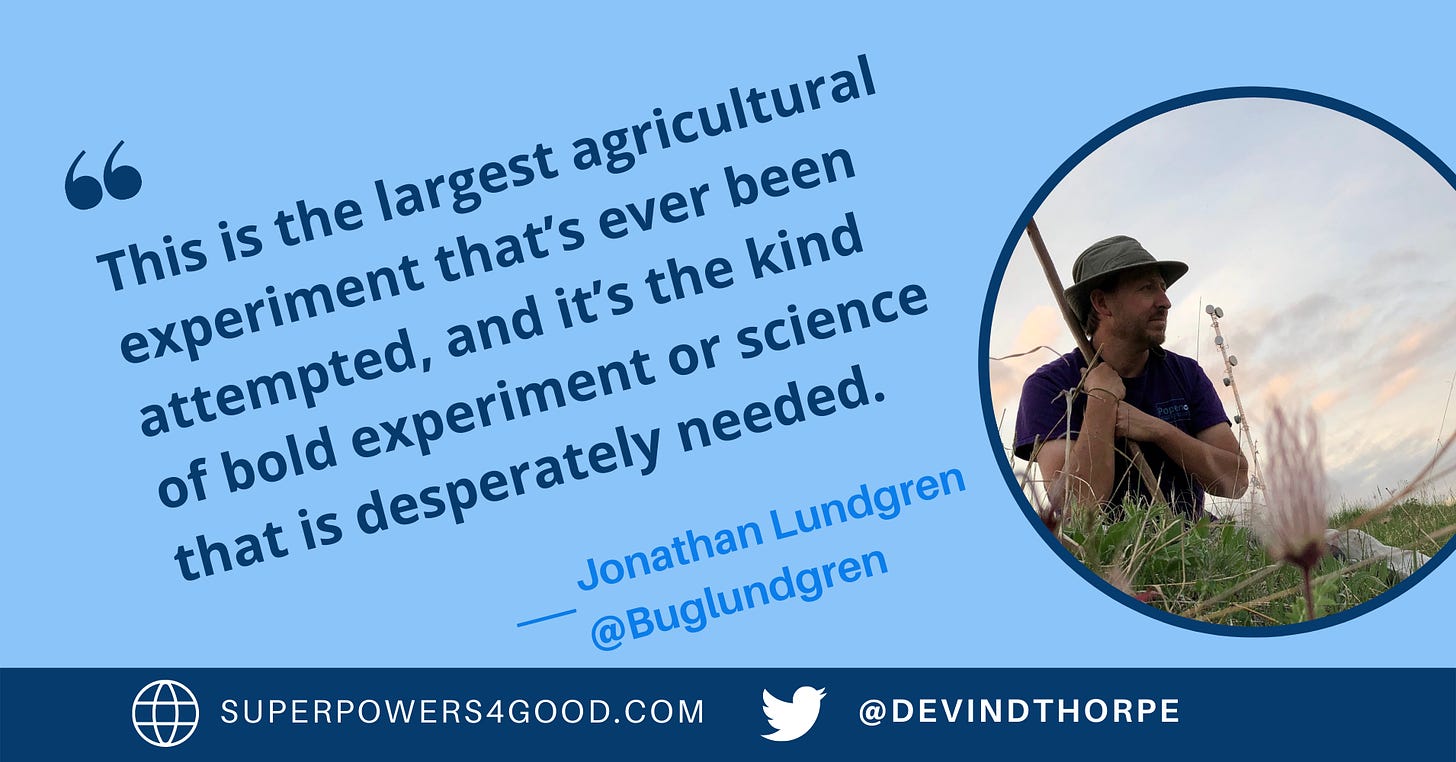
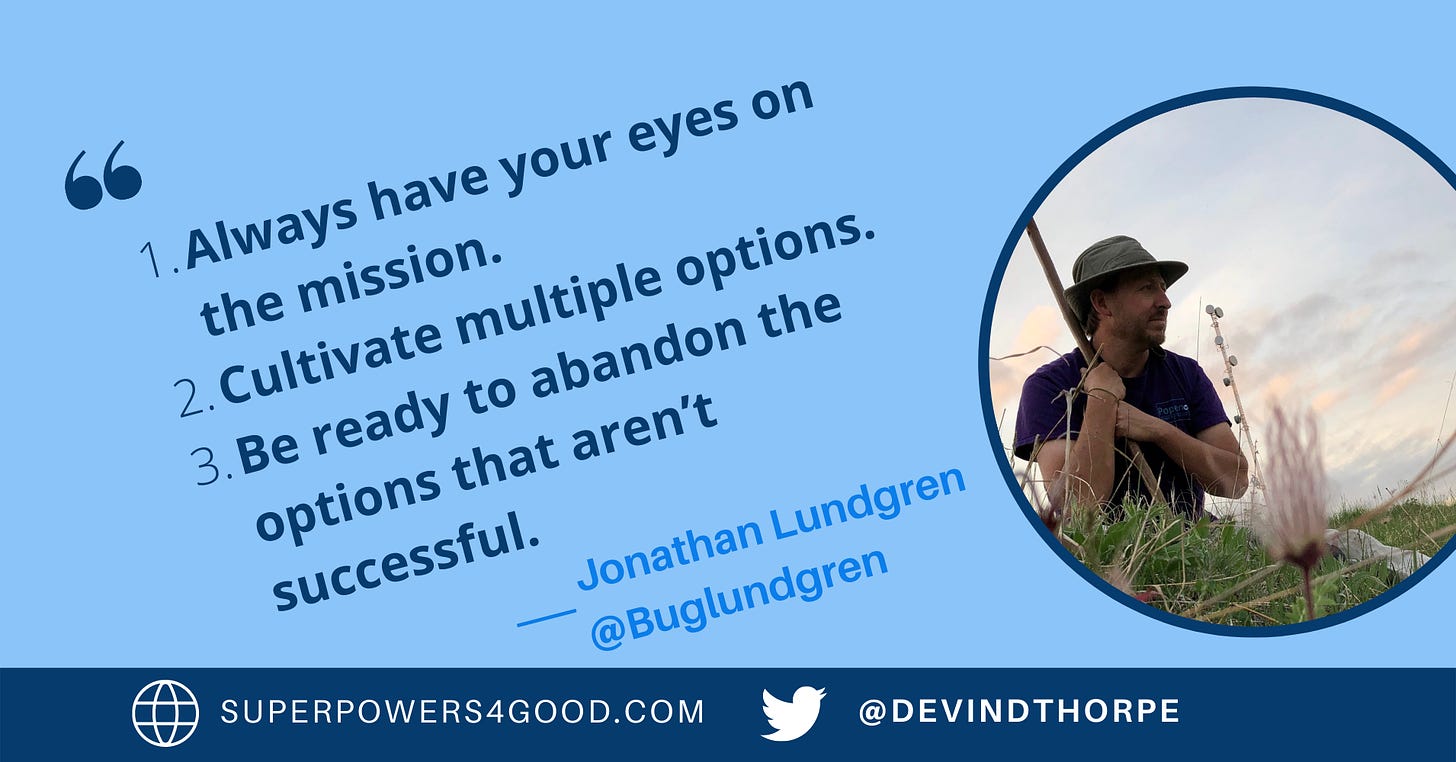













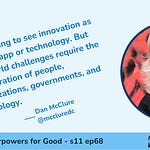




He Quit His Job As a Scientist to Be a Farmer